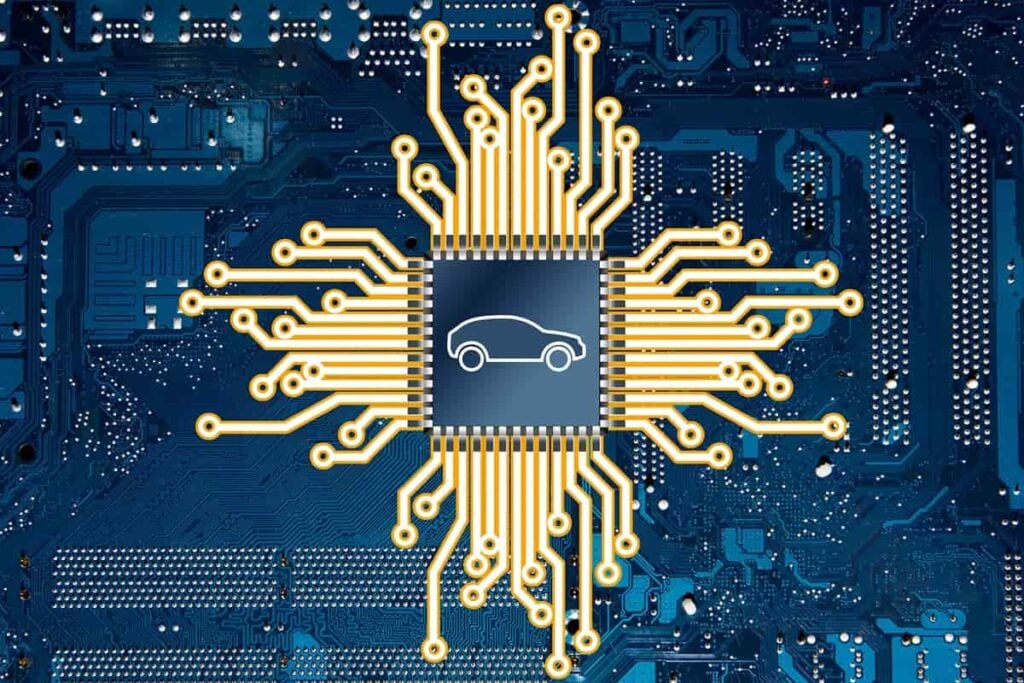Tritium Stock: A Global EV Charging Play
Table of contents
Table of contents

Big oil may have a bad name, but it’s in no danger of being replaced by electricity anytime soon. Some developed markets may be seeing traction with electric vehicles, but for emerging markets – where 85% of the world’s population live – petrol-powered vehicles are going to be around for a long time. That’s why the pick-and-shovel thesis for electric charging needs to be scrutinized a bit.
People won’t adopt electric vehicles unless there are plenty of places to charge them. Corporations won’t deploy electric vehicle chargers unless there are plenty of customers with electric vehicles. This Catch-22 creates a problem for any company that wants to make money off electric vehicle charging. Perhaps the best business model is to sell the chargers and software and let someone else worry about recouping the costs. That’s precisely the business model that’s been adopted by Tritium, a company that recently decided to go public using a special purpose acquisition company (SPAC) called Decarbonization Plus Acquisition Corporation II (DCRN).
About Tritium Stock
Founded in 2001, Brisbane, Australia startup has taken in $94 million in disclosed funding to build out a global network of premium electric vehicle charging stations. In our previous piece on Investing in Public Electric Vehicle Charging Networks, we learned that not all chargers are made equal. The three main categories of chargers are as follows:
- Level 1 chargers practically mean plugging your car into the wall socket to provide overnight charging. These are typically what EV owners use at home.
- Level 2 chargers use double the standard voltage and deliver 10-60 miles of range per hour of charging,
- DC Fast Charger (Level 3 and up) offer 60-100 miles of charge in just 20 minutes.
It’s logical to assume that the industry will eventually adopt the fastest delivery of energy as a standard, and DC Fast Chargers will become ubiquitous. That’s why Tritium is exclusively focused on DC Fast Charging or DCFC and will become the only pure-play stock for fast charging infrastructure once the merger goes through. Around 70% of Tritium’s revenues come from Europe with 20% coming from the United States and 10% coming from Australia and New Zealand. Having a heavy European focus makes sense when we look at how rapidly EV adoption is happening in that region.

If this growth were to continue, then investing in European electric vehicle charging infrastructure makes a whole lot of sense. Tritium’s revenue growth has been steadily increasing over time with The Rona interrupting growth in 2020 as expected.

Around 96% of 2020 revenues came from selling chargers and the remainder from software, though the hardware contributions are expected to decrease over time to 73% in 2026 with software and services making up the remaining 27%. Tritium has sold around 4,400 charging units thus far and each has an estimated lifespan of ten years and a standard two-year warranty. (The company’s liquid-cooled technology results in up to 37% total cost of ownership reduction over 10 years.) Paid warranty extensions and tiered service level agreements provide additional streams of recurring revenues which will grow over time as Tritium’s install base increases.
The Tritium investor deck contains some interesting commentary on IoT sensors and big data. Since all chargers are connected and monitored in real-time via 4G, it opens the door for features such as predictive maintenance. DC charging allows for the chargers to communicate with vehicles while they’re being charged, so Tritium can provide fleet managers valuable operational data. It makes a lot more sense as to why Palantir has decided to invest in Tritium (alongside a slew of other SPACs) through a PIPE financing deal that only goes into effect once the SPAC merger is finalized.
Should You Buy Tritium Stock?
Our first concern would be that hardware currently accounts for the majority of Tritium’s revenues, and even five years down the line. Once the deployment of fast chargers has been exhausted in developed markets, we’ll then need to wait for emerging markets to catch up, right? Not according to analysts who see a tremendous amount of growth to be had over the next five years giving Tritium plenty of room to run. Below is the average of estimates taken from a handful of research firms.

The above represents a fast-growing blue ocean total addressable market that will reach $50 billion by 2026. This means rapid expansion should be Tritium’s number one priority. Following the SPAC, they’ll have $300 million in dry powder to help fuel growth. (The company’s registration statement also notes $300 million in debt.)
With an implied market cap of $1.7 billion and estimated revenues of $84 million for 2021, Tritium’s simple valuation ratio comes in at around 20. To put that number in perspective, we won’t touch any stock with a ratio of 40 or higher. We can also compare this to another publicly traded EV charging stock, ChargePoint (CHPT), which is extremely overpriced right now.
- Market cap / Q2-2021 annualized revenues
$7,000 million / $162 million = 43
We’ve covered over 50 SPACs and not a one can be found in our own tech stock portfolio. That’s not just because SPACs are exceptionally risky, it’s because most SPAC filings just don’t contain enough information to make an informed decision. Like some of the others, Tritium will be set aside so that we can take another look later when more information is made available.
Until the proposed business combination is finalized, don’t buy shares in DCRN because things can go pearshaped in a hurry. Once the ticker changes to DCFC, you’ll know the deal has gone through.
Conclusion
There’s nothing to dislike about Tritium, aside from their choice to go public using a SPAC, which means we lack sufficient information to make an informed investment decision. Once the merger goes through and some proper filings are made, we’ll come around to take another look. In the meantime, Tritium will be added to The Nanalyze Disruptive Tech Stock Catalog as a “like.”
Sign up to our newsletter to get more of our great research delivered straight to your inbox!
Nanalyze Weekly includes useful insights written by our team of underpaid MBAs, research on new disruptive technology stocks flying under the radar, and summaries of our recent research. Always 100% free.















+64% today.
electrive: Tritium reveals location of US plant in Tennessee
“Australian charging station manufacturer Tritium has announced the construction of a manufacturing facility in the US state of Tennessee with up to six production lines to manufacture up to 10,000 Tritium DC chargers per year. President Joe Biden announced the Australian company’s US location.
The new production facility will be located in the US city of Lebanon. Tritium says that at full capacity, production there can potentially be increased to as many as 30,000 units annually. President Biden used the announcement of the facility in Tennessee to reiterate his commitment to transition the US government’s fleet to electric power.
According to US state officials for President Biden’s announcement, production in Lebanon is scheduled to begin in the third quarter of 2022. Among the products built there will be the most familiar RTM150 model, as well as the PKM150 model that was introduced in December 2021. Over the next five years, this is expected to create more than 500 jobs in the region.
The company also says it will expand its European production capacity by 2023 by expanding existing facilities or building new ones. As yet, the company has not revealed more concrete information about its plans here.”
That’s an interesting tidbit of info Stan, thank you for dropping it.